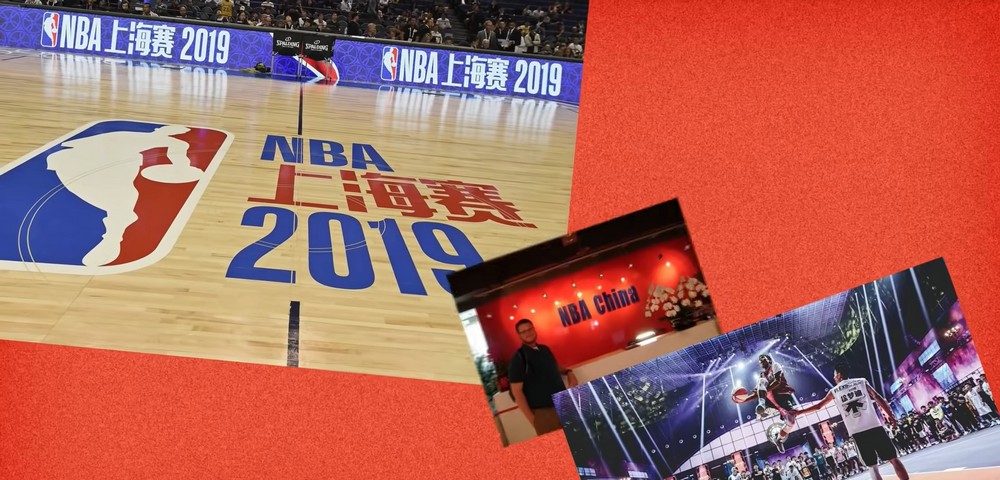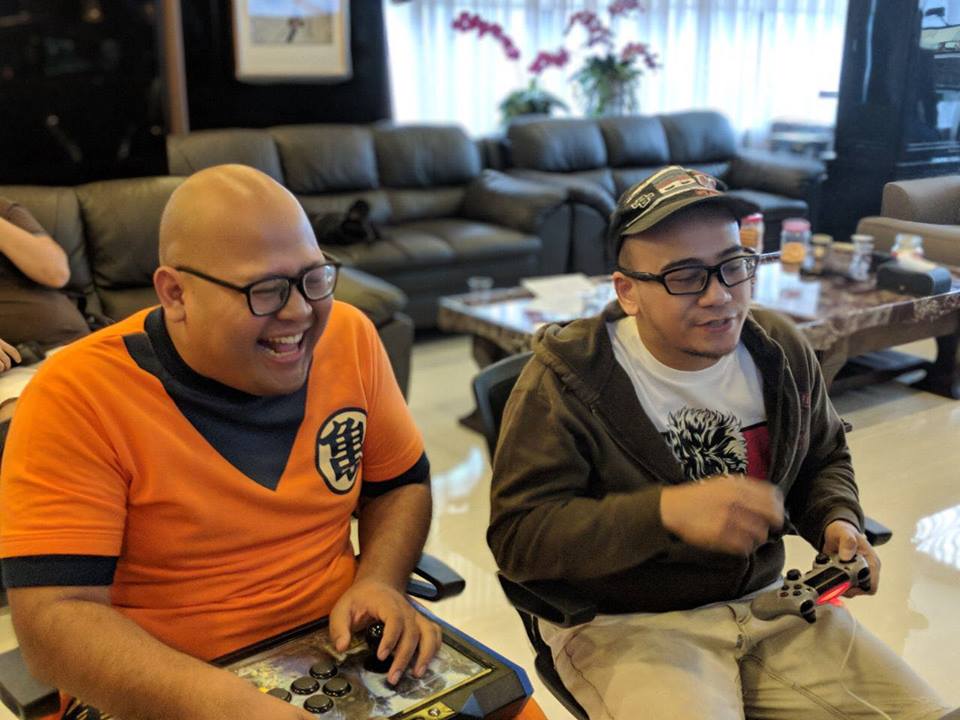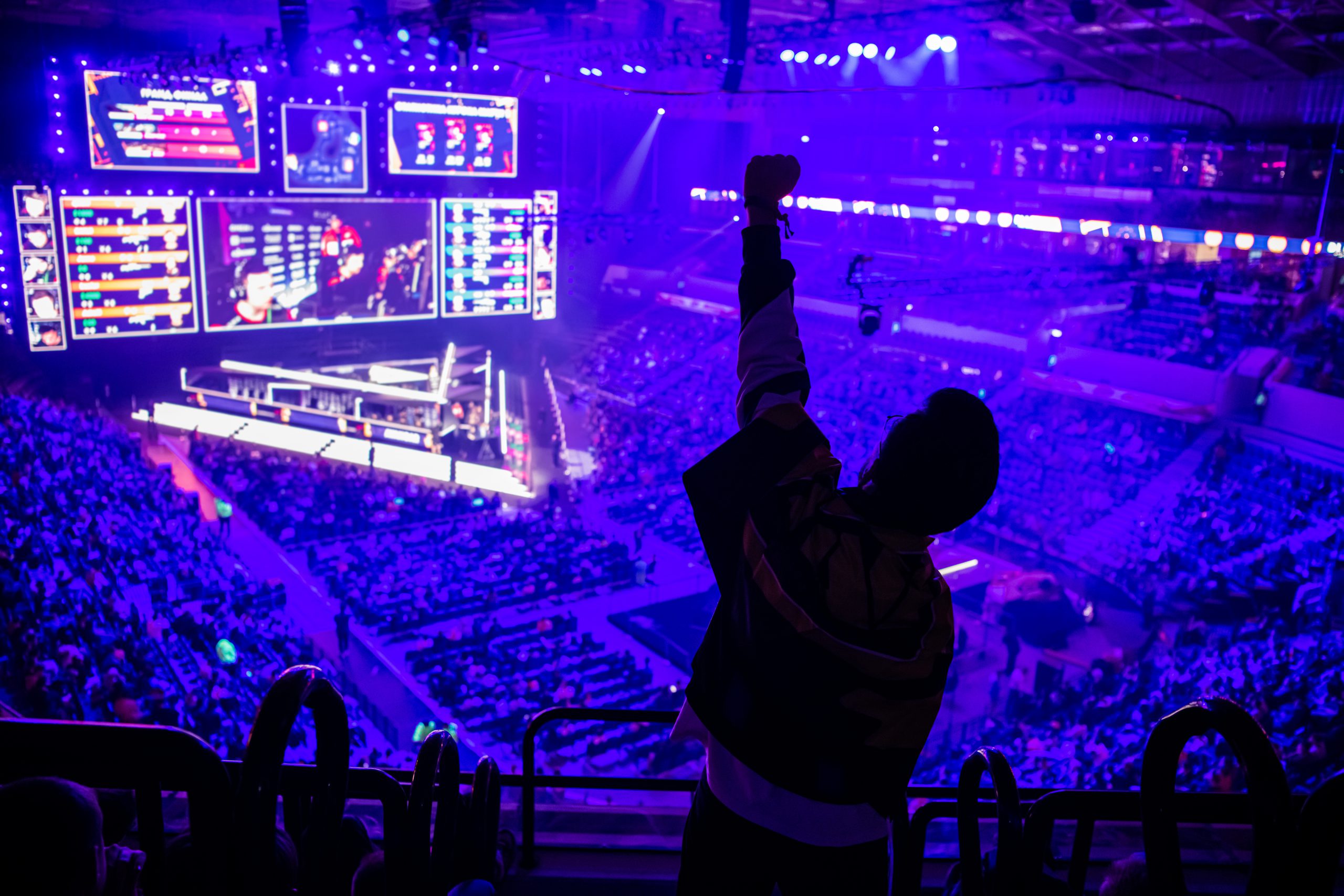Why is LoL’s esports scene much more successful than Dota 2’s? Why can CS:GO become an esports phenomenon in EU and NA, but is becoming less popular in the SEA region? These have probably crossed your mind if you are a fan of these games.
What are the answers to the questions presented above? How can a game become the center of attention in the esports ecosystem? In this article, I will try to discuss and investigate the factors that can make a game successful as esports.
Taking a Look at the Sports Industry
If you have read any of my other articles, you may be aware that I have referred to the sports industry several times when explaining phenomenons in esports. I like using this comparison because esports has a lot in common with the sports industry in many aspects.
I was also inspired to discuss this topic by a YouTube video from Athletic Interests that talks about the sports industry. The video that inspired me was a video titled “Why basketball sells more than baseball.”
The Athletic Interest bases their video on Steffan Heuer‘s article written in German, which appeared in a sports business magazine called Brandeins. In his article, Steffan mentioned four factors that allow basketball to be more internationally popular than baseball.
Firstly, baseball is a much more complicated game than basketball. Secondly, the average duration of a baseball game is also very long. Thirdly, the league season is also much more lengthy. Fourth, there are much fewer baseball players that come from outside the US.
I will briefly discuss and explain each of the points made by Heuer. If you want to look at this topic in a much more detailed fashion, you can watch the video or read Steffan Heuer’s original article.
Regarding the first factor, Steffan Heuer compared the complexity of the two sports through the size of their respective rulebooks. The major baseball league, MLB, has a total of 188 pages in their rulebook, while the NBA has only 68 pages. A complicated set of rules will generally result in a much more complicated game, even though baseball only looks as simple throwing and hitting a ball with a bat.
The second factor proposes that game duration can explain the discrepancy in the popularity of basketball and baseball. The net duration of a basketball game is roughly 48 minutes (4 quarters of 12 minutes). If you take timeouts and half-time shows into account, the total duration of a basketball match broadcast will be approximately two hours. Meanwhile, two hours is the shortest possible duration of a baseball game. There was even a baseball game that lasted 8 and a half hours. There is also a game that lasted two days in 1981.
In the third factor, Steffan explained that there are 162 games in a baseball season that run for six months (about 27 games a month). In addition, the Baseball finals are also conducted in a best-of 7 format. Taking into account the duration of the matches, the finals may take one month to complete.
The last factor explains that players in the baseball league mostly come from the US only. How about basketball? If you follow the NBA, you probably know that many popular basketball players come from outside the United States. There are stars like Dirk Nowitzki, who came from Germany, or Yao Ming, who came from China.
Apart from these four core factors, other points are also briefly discussed in the video. For example, the video also discusses NBA’s investment in China by building basketball courts and even building offices. This investment was quite successful in making basketball known in China.

Another factor also comes from the equipment needed to play the game. To play baseball, you will need a set of expensive equipment. You will also need an enormous baseball field. These prerequisites are not present in basketball. You only need a pair of shoes, a small court equipped with a basketball pole, and a ball to play the game.
All these factors describe how the popularity of basketball far exceeds baseball. According to Steffan Heuer’s explanation above, basketball’s simplicity and action-packed matches are suitable for capturing the interest of audiences locally and around the world.
We can classify these four factors into two groups: internal factors and external factors. Internal factors refer to the attractiveness and engaging aspect of the game. External factors pertain to the incentives taken by certain parties to advertise the game to more people.
The first two factors explained by Heuer can be classified as internal factors because they discuss why the sport can be engaging to the audience. The third and fourth factors can be classified as external factors because these two factors explain what the NBA is doing to promote and make the game much more enjoyable.
Now, let’s see how these factors can be applied to the esports sector.
How Can Some Games Be Popular as an Esports
In my opinion, these four factors that we have discussed can actually be applied to esports. The first and second factors, which talk about the attractiveness of the game, can be translated through the gameplay aspect. The third and fourth factors will measure the developer’s efforts in promoting the game and designing the esports game ecosystem to be enjoyable for fans internationally.
Based on what I have captured in Steffan’s explanation, internal factors remain a key aspect in explaining the popularity of a game because the development of today’s sports industry is very similar to esports.
How similar you might ask? The development process starts from the creation of the game first. Then, the game starts to be played and attract the interest of some people. When enough people got interested in the game, competitions began to be held and commercialized into the business model we have today. Perhaps in the past, the people who watched the basketball league were just people who played basketball. However, since the game is relatively easy to understand and is constantly promoted by the NBA, people who don’t play basketball also become interested in watching basketball games.
Esports does not originate from the game developer themselves. Instead, Esports is initiated by the community of players, which are then supported by the game devs. I discussed this exact topic in an article about the history of esports. You can find the article at this link. Therefore, a game must be interesting in the first place before it can grow into a successful esports.
For our case study, let us use League of legends’ journey in becoming a global esports game. League of Legends has actually been popular since the early years of its release. According to statista.com, there were 15 million monthly active users of League of Legends two years after the game was released in 2009.
How did League of Legends become more popular than its predecessor: Defense of the Ancients (the custom map for Warcraft III: The Frozen Throne)? Maybe you could say because League of Legends has fulfilled two factors from Steffan Hauer’s explanation above, namely that the game is simpler and the duration of the game tends to be shorter.
When compared to DotA, League of Legends is simpler. The division of roles in League of Legends is clearly stated. Items in League of Legends can rarely be activated, so it is unnecessary to remember many character-item combinations. In addition, League of Legends also makes the fog of war system simpler by removing high ground and low ground mechanics, day and night mechanics, and changing trees into bushes. Because it’s simpler, League of Legends is much more beginner-friendly than Dota 2.
Let’s discuss the second factor: the duration of the game and the level of action presented. League of Legends can also be said to be a pioneer that succeeded in defining the duration of a MOBA game. A Defense of the Ancient game usually lasts around 45 minutes, which might be longer in a close or tight match. On the other hand, the minimum duration of one League of Legends game is around 30 minutes.
The level of action in a League match and Dota 2 is quite comparable. However, one certain thing is that the snowballing economy system applied in the League of Legends game clearly defines the direction of the match. In a snowballing system, the team that loses at the start of the game will have a smaller chance of turning things around.
Meanwhile, Dota applies a rubber band mechanism in their gameplay. The system does make the tug of war much more interesting. However, this kind of system also makes it difficult to predict the outcome of the match. In the rubber band system, team advantages can be reversed and equalized easily. Therefore, the Defense of the Ancients and Dota 2 matches tend to last much longer.
To prove my opinion, I searched for the longest game recorded in both LoL and Dota 2. The results were as I initially expected. The longest-running professional League of Legends match was between SKT vs. Jin Air at LCK Spring 2018, which lasted 1 hour 34 minutes. On the other hand, the longest Dota 2 match was between Cloud9 vs. ScaryFaceZ in the qualifiers for Starladder Season 12 (2015), which lasted 3 hours 20 minutes. You read that right, THREE … Hours. The two of them may both present non-stop action in the competition. However, I don’t think I have the perseverance to watch a Dota 2 match for three straight hours.
In the third factor, Steffan Heuer highlighted the impact of the duration of the season. In the esports world, I interpret this factor as the competition format. So far, what Riot Games has done with the League of Legends esports league is truly extraordinary when compared to other games.
The esports scene of League of Legends is managed very seriously by Riot Games to the point where it is on par with mainstream sports leagues. Therefore, it is not surprising that League of Legends has succeeded in continuing its success. It has transformed from a typical MOBA game to an esports watched by people around the world and managing to record more than 139 million total watch hours in 2020.
The last factor is a matter of the diversity of star players in a sports league. At this point, I interpreted the intention of Stefan Heuer’s discussion as a form of related party investment in local schemes. In the context of basketball vs. baseball, the video explains how MLB’s investment as the first party in the US baseball sports industry tunnel-visioned in the US alone. While on the other hand, the NBA continues to develop its market outside the US, such as China.
Because of this, basketball can become more popular internationally than baseball. As more countries are exposed to the sport, there will be a larger audience and more diversity in the star players lineup. However, with baseball, Heuer explained most of their stars originate in the United States.

League of Legends may have employed a strategy similar to that of the NBA, although I am not sure if Riot is inspired by the NBA. We can see the similarity between the two leagues as Riot games also promote and invest their game around the world.
The current four largest League of Legends esports leagues are LEC in Europe, LCS in the United States, LCK in South Korea, and LPL in China. Riot Games also invests in smaller regions that have potential such as PCS in SEA, Taiwan, OPL in the Oceania region (Australia), LCL in the CIS region (Russia, Ukraine, and their neighbors), NLC in Northern Europe (the United Kingdom, Nordic countries, and beyond), and LLA in Latin America. Apart from these smaller regions, Riot Games also invests in countries such as LJL in Japan, VCS in Vietnam, TCL in Turkey, and CBLoL in Brazil.
Everything I mentioned may not include all of Riot Games’ investments. However, we can see Riot’s serious take on developing League of Legends into a worldwide esports. From this form of investment, it’s no wonder that League of Legends esports can grow to the global phenomenon it is today.
Why Some Games Are Less Successful in Becoming an Esports
After conducting a case study from League of Legends, which has had great success from gaming to world-class esports, we can look at why some games are not as successful as esports. The games that I took as examples are Pro Evolution Soccer and Fighting Games.
I chose these two specific subjects because I feel that these games have actually succeeded in fulfilling the two internal factors that we discussed earlier. However, its position as an esports is dominated by the MOBA and FPS genre.
Fighting games are relatively simple, even though the game mechanics can be difficult to master at the highest level. Aren’t most esports games built the same? Games are generally easy at first glance, but will get more complicated as we dive deeper into the game. Fighting games are considered simple for casual players. The matches’ duration is also relatively short and very action-packed.
What about PES? PES is essentially a virtual simulation of football. PES gameplay is a football game in its very nature. However, if there are 517 million people in the world who watch football matches, why can’t PES be successful as esports?

To answer this question, I spoke with Valentinus Sanusi, the founder of Liga1PES, and Bram Arman, often seen as the “elder” in the fighting game community (FGC) in Indonesia. From our discussion, I concluded the two games were not successful as esports because of the developer’s lack of investment. Other external factors also include the fact that the two games were developed by a Japanese company, which is generally less keen on adopting a free-to-play game business model or the esports ecosystem business. Besides that, there are also several internal factors for the game itself, especially in terms of access.
In terms of fighting games, Bram Arman shared how a fighting game that is rooted in the community did not bloom as much compared to other esports games in general. “As far as I know, mainstream esports is able rapidly to grow through the influence of the developers or the 1st party. Therefore, the esports investment is considered as “direct”. The case for FGC is different. The 1st party investment is also only present in more developed countries. Therefore, in Indonesia itself, the development of FGC is classified as organic with minimal assistance from the developers. ”
If we look at the development of FGC, the Evolution Championship Series, a tournament with the most advanced development of fighting game esports, actually started as a community tournament rather than initiated by the developers. The Evolution Championship Series was also developed much earlier than the Capcom Pro Tour, which was initiated by Street Fighter developers starting in 2013.
Then what about Pro Evolution Soccer? Why can’t the esports sector football games be popular as the sports counterpart? Valen explained that “One of the reasons is because the esports community is vastly different from the soccer community. From what I have observed, the majority of the soccer community does not necessarily coincide with esports fans. In other words, football fans do not always classify themselves as esports enthusiasts.”

Valen then explained that “Esports enthusiasts here are not the type of people who will look for esports matches when opening social media or YouTube. Therefore, it takes a lot of effort to spread the enthusiasm of football esports to the public, so that football viewers will also be interested in the esports .”
From Valen’s explanation, I got reminded of the Social Media Bubble concept, which proposes that users will be confined to their preferred. Therefore, it’s no wonder that football fans may not know soccer esports or maybe even don’t know anything about the soccer game itself.
I also asked their opinion regarding internal factors or the appeal of the game itself. I previously explained my view about this topic in the third paragraph of this section. However, what do Bram and Valen have to say about this?
I have also seen another video that explains why another football game esports, namely FIFA, is not as successful as other mainstream esports. The video proposes that FIFA’s gameplay involves too much RNG or luck. The luck factor present in FIFA revolves around the fact that the player can only control one character at a time. The 10 remaining players on the field are automatically controlled by AI hence the luck factor. Therefore, the video considers the outcome of the match will, to some extent, be determined by luck. What about PES?
However, Valen said, “I strongly disagree with this opinion. This year, FIFA has just released a new competition feature called FUT co-op. PES has even implemented this system three years before FIFA. Furthermore, though the luck factor may exist in the game, it is incredibly minor compared to the entire aspect of the gameplay. Besides, these external or uncontrollable factors can spice up the football match, just like in real life.
What about fighting games? Bram also shared his opinion about the problem of accessing fighting games in general. “In my opinion, one of the reasons why esports in fighting games are less developed is due to their conventional business model. Most fighting games require players to purchase the game, with real money, of course. Furthermore, these games are usually not cheap. Indeed, you can sometimes access fighting games for free, but only for a free trial.” Bram highlighted the access problem to fighting games which heavily affects the player number.
“Plus, I think the learning curve of fighting games tends to be steeper than other games. Although the game may seem simple to beginners, the skill ceiling can grow steeper as the level of play increases. These are aspects such as mastering combos with different characters per se.” Added Bram.
Indeed, fighting games can be much more difficult to master compared to other games. But how much more difficult exactly? We can take the example of how the button input affects motion output. Games like MOBA or shooter have simple inputs: mouse clicks and QWER keyboard buttons for MOBAs or WASD for shooter game movements. Fighting games do not have these kinds of straightforward inputs.
In Tekken, for example, pressing the box button alone has a different output compared to pressing the square button plus the forward button. Not to mention that the type of movement also differs from one character to another character. A character may have a box input + forward button, but another character may not. That’s why you will need a strong memory, careful decision-making skills, and nimble fingers to master the game at the highest level. For more details, I have previously discussed the unique appeal of fighting games.
Furthermore, our discussion then turned to the external factors that come into play. PES and Tekken have one thing in common: they were developed by a Japanese developer. Both Bram and Valen also agreed that this is one of the reasons why both of the games have less developed esports scenes.
“You can definitely say that was the case.” Bram opened the discussion. “Japan even had laws that prohibit prize money for esports tournaments, unless it is arranged by 1st party organizations. Third-party organizers are only allowed to give merchandise prizes only.”
Valen then added. “I also agree that Japanese developers are not updated in the world of esports, of course including Konami. Their moves or incentives towards esports are too slow and will never catch up to today’s standards. They often take too many considerations from the company side and are unwilling to invest in the esports scene. In fact, Pro Evolution Soccer on consoles and mobile doesn’t even have a spectator mode until recently, even though this feature is crucial to support an esports ecosystem.”
There is indeed a reason why Japan is too late to catch up with the current esports trends despite leading in the game industry. The reason is the polemic relations between the yakuza, the government, and the law which prohibits gambling in Japan.
An article by Imad Khan on ESPN outlines the origins of the Japanese government’s negative view on gambling. In his article, Imad tells that the root of the problem exists in Nintendo Koppai (the previous name of the Nintendo company in the past). The company created gambling machines using video technology around the 60s. As a result, Japanese authorities banned video game matches because they were considered another form of gambling. This view is still carried on until today and, thus, the esports structure is incredibly underdeveloped in the country.

Tournaments that charge registration fees to participants are prohibited by the government. Additionally, as Bram mentioned previously, some tournaments can only have merchandise prices instead of cash prices. The value of the merchandise that is awarded is also limited to around US$ 1000, based on an ESPN article.
The presence of the Japan eSports Union (JeSU) in 2018 is a glimmer of hope to break the impasse in esports development in Japan. As a means of legalization, JeSU creates an esports athlete license to determine who is entitled to receive cash prizes from an esports tournament. Even the presence of JeSU and the regulations regarding professional player licensing alone still had time to become a polemic, especially when Momochi (a Street Fighter V pro player) expressed his criticism of the implemented system.
Before closing the discussion, we tried to conceptualize a scenario where the Japanese government and developers were less restrictive towards the esports world. Would fighting game esports and Pro Evolution Soccer be able to compete with League of Legends, CS: GO, or other popular esports games?
“This is a very interesting ‘what if’ question. When it comes to the past, I think fighting games certainly have a lot of potential.” Bram said. “As a game genre that is fairly appealing to the general public, I am also quite optimistic that PES or other sports genre games can compete with popular esports games.” Valen also included his opinion.
Predicting the Next Esports Trends
After discussing and looking at case studies on how different games can have a different degree of success in their esports, the next obvious step is to predict which game will bloom as an esports in the future.
Using the concepts that we have learned, we can easily predict which games will have a successful esports scene. Of course, the next successful esports games are games that fulfill the four factors we discussed earlier. The game will have relatively simple gameplay, a short duration with intense action. In addition, the game must also have a competition format or feature to compliment spectators. The game will also be supported by the developer’s investment in local scenes.
However, determining which games will be appealing can be difficult. Video games are classified as a creative industry and we cannot easily determine a definite recipe for success. After all, it is not easy to predict people’s taste for intellectual work.
However, who would have thought that the MOBA and Battle Royale genres could become as popular as they are now? Even if we look back, there are several game genres that used to be popular but are left out today’s gamers. We can take the RTS genre from games like StarCraft or MMORPG from games like Ragnarok Online as an example.
Even people’s tastes in the realm of sports also don’t have a definite formula, as mentioned at the beginning of Athletic Interest’s video. Although half of the world’s population is passionate about football, some countries still have their own favorite sports, such as archery in Bhutan, skiing in Austria, wrestling in Mongolia, or badminton in Indonesia. Even strength competitions, as shown below, surprisingly managed to capture the interest of many audiences.
When it comes to the third and fourth factors, predicting the trend might be even more complicated. Riot Games’ newest games might become another new esports trend because they do not view esports as a means of marketing but as a form of business model.
But that notion alone cannot be used as a standard. Even though Riot Games is committed to earnestly developing Wild Rift’s or VALORANT’s esports, is it possible that these games are destined to be popular before they even exist? Many questions arise, but we’ve only covered one. For example, what if an unknown developer with a huge capital wanted to develop an esports? Will the game be able to beat the existing market today?
However, I hope that the discussion of the four factors mentioned by Heuer can at least be a reference or framework for those of you who might want to invest in esports, either from a business standpoint or a sponsor.
Translated by: Ananto Joyoadikusumo














